new posts in all blogs
Viewing: Blog Posts Tagged with: magazines, Most Recent at Top [Help]
Results 26 - 50 of 227
How to use this Page
You are viewing the most recent posts tagged with the words: magazines in the JacketFlap blog reader. What is a tag? Think of a tag as a keyword or category label. Tags can both help you find posts on JacketFlap.com as well as provide an easy way for you to "remember" and classify posts for later recall. Try adding a tag yourself by clicking "Add a tag" below a post's header. Scroll down through the list of Recent Posts in the left column and click on a post title that sounds interesting. You can view all posts from a specific blog by clicking the Blog name in the right column, or you can click a 'More Posts from this Blog' link in any individual post.
I was sitting in a restaurant on Friday. On the wall was a very cool painting of fish. It had a whimsical childlike quality. The stuff I like to paint. The longer I stared at the painting, the more impressed I was by how well the artist had captured fun and playfulness in the work.
When the owner of the restaurant stopped by our table I just had to ask, "Do you know the artists that created that painting?"
The restaurant owner leaned over with a big smile on his face. "I sure do." He said. "My kid painted that along with her elementary class."
How great is that?
The painting is pictured above. I hate that the photo is so low quality but it was dark in the restaurant and the photo was taken on a cellphone.
The painting was so inspiring that I decided to pick up my brushes again this weekend. It is the inspiration for my
new magazine cover series. Here is one of the covers in the works....

Meet Chug is a new art initiative I concocted this morning while drinking coffee. I thought, what might be fun to paint on? Then I went to my studio and the only thing there were some old magazines. How fun to redesign the cover of a magazine?
I pulled out some sketches I did during a Christmas party on Friday night. You see, sometimes I go to parties and the people there talk about work. I don't know why people talk about work at parties. I bet when they go back to wrok on Monday they talk about the party. But I digress.. While they talk about work, I sketch stuff. It keeps my eyes from completely glazing over.
The magazine I found was an outdoor sportsman magazine chock full of articles about hunting and fishing and fun stuff that could be talked about at parties instead of talking about work.
The sketch is a cartoon version of a backhoe. I am fascinated with backhoes. If you are looking to get me a Christmas present a backhoe could be on your short list. The backhoes name is Chug. And now you have met.
It's probably a little cliche to paint a backhoe on a magazine that is nature related but it happened by chance.. it's the sketch I did and the magazine I found... so i'm going with it.
Above is a blurry photo of the magazine with the cover painted. There is also a book just incase the magazine doesn't pan out due to technical issues (glossy paper might peel, might curl, etc..)
They may be the same number of words, but they're not the same.
http://www.institutechildrenslit.com/rx/ws06/pborzine.shtml
Author Evelyn Christensen provides links to submission guidelines for children's magazines.
highlights.com/contributor-guidelines

Scrawl is a new digital magazine about comics & illustration created solely for the iPad. Scrawl was created as an independent platform for artists, which enables freedom and the opportunity to create and share their work with others. The pilot issue, which is now available as a free download, won both the best in the comics category and the first prize at the “Magnify your world” contest held by Mag+.
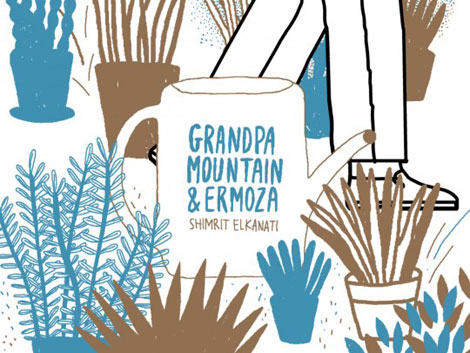
—–
Also worth viewing:
Laura Cattaneo aka Halfpasttwelve
PLOC Magazine
Anorak Magazine Interview
Not signed up for the Grain Edit RSS Feed yet? Give it a try. Its free and yummy.
Share This
A Huge thanks to Squarespace for sponsoring this week’s RSS Feed!
©2012 Grain Edit - catch us on Facebook and twitter

Something strange arrived in the mail yesterday. I’m worn out from the wondering,

tuckered out from the thinking….

It’s not a rejection, because Mom didn’t put it into the shredder (to destroy the Karma). It’s not a bill, because Mom didn’t get online (and mumble) and pay it. It’s not a catalog, because she didn’t order me ( or herself) a new dress or toy.
Is it…? Could it be…? It IS! It’s an acceptance from Turtle Magazine.

They are buying one of Mom’s stories! Yay! The contract is signed and ready to go, and the letter is hanging on the bulletin board. It’s not Book #2, but it’s an acceptance, and we LOVE that! Look for Mom’s story, Waiting For Petey in the November/December issue of Turtle Magazine for Preschool Kids. That’s if you can find a copy. Mom might go mental with excitement and buy them all herself.
I wonder if Turtle Magazine tastes as delicious as the rent bill…..
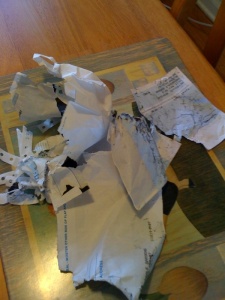
Speaking of delicious things … and happy things, I’d like to thank our friends at DogDaz for giving us another Addictive Blog award, and our friend Chelsea at The Jenny Mac Book Blog for saying we’re Lovely again. Both these blogs are fun to laugh with and learn from. See more about these awards here and here.


Things always work out even-steven for me. If I lose a ball, I find another one on the field. If I accidentally eat the wing off my stuffed chicken, Mom buys me a stuffed goose.

Sometimes I fall off the chair. Other times I fall off the couch. Sometimes, I’m naughty, and sometimes I’m super-cuddly. Even-steven.
Mom was even-steven yesterday. Early in the morning, she got an acceptance for her story Too Many Pets from Stories for Children Online Magazine. She printed it out, hung it up on her bulletin board, and said, “Yay!” and “Yay!” and “No, you may NOT eat the thumb tacks.”
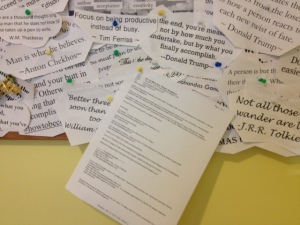
Then the mailman brought her an envelope from Highlights Magazine. Mom said, “I bet this is another acceptance!” and “We’re on a roll!” and “Yay!” Then she opened it (insert dramatic music here). I was hoping she would take out the box of thumb tacks (which I’m DYING to taste), to hang it up next to the other one, but nope. No hanging, no tacks, …no yay.
Mom said, “Bummer.” and “Rejection.” and “At least she personalized it with a little note.”
Sometimes, even-steven stinks! But not for me! Later I plan on being super-cuddly….



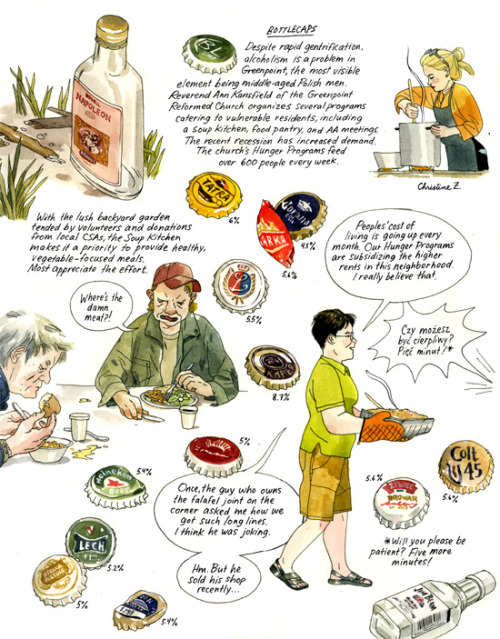
Jillian Tamaki takes my breath away. In her words:
A 6-page visual essay for Print Magazine’s “Trash” issue. Over about four weeks in April, I surveyed lost, abandoned, and discarded items on three blocks surrounding my apartment in Greenpoint, Brooklyn. The “trash” ranged from the mundane to the bizarre to the seemingly-poetic.
Click through to see the full post, which is beautifully drawn, beautifully painted, and beautifully paced. *sigh*

 By Daisha Cassel
By Daisha Cassel
Imagine a “niche writer,” and you might think of someone who is limited. Boxed in. Pigeonholed.
Or maybe you actually envy niche writers because they obviously have years of deep experience in a particular field which they can now apply to their writing. And you don’t.
I haven’t been writing for decades, nor do I have any spectacular educational or career experience in the topic I write about most. I write for a variety of publications, from national and local mags to those entertaining booklets that grocery stores hand out before the holidays. Most importantly, I am able to make more money—and write for a much wider variety of clients—now that I have developed a niche.
Connect the Dots
Sometimes your niche is something you never would have thought about developing. This was certainly the case for me. When I started writing, I had a dream… I had an awesome dream. Lionel Richie would narrate my life through song while I wrote for the big glossies. Focus area? I didn’t need that! I could write about anything!
It went well at first. And then, I got frustrated. Each new piece required research into an area I was completely unfamiliar with. It was interesting and educational, but it was time consuming. When I broke down my hourly rate for these pieces, it wasn’t looking good.
I had written for a national food and lifestyle title when I learned about a new in-store magazine that was being developed for a big grocery store chain. I contacted the editor, flaunting my food mag experience. She immediately assigned me an article. A job had never come so easily.
Shortly after that, I was in another grocery store when I noticed this store had a much larger, very professional looking food-based booklet. I called up the publisher, introduced myself as a food writer, and stated my credentials. By the next week, I had two assignments for the publisher worth a total of $4,000. I had never had an assignment that paid so well.
Wanna know a secret? The articles I had written for the big food magazine—the one I name-dropped to get my other food assignments—weren’t even about food.
But I was familiar with the world of food writing and publication, and I connected the dots… and if you have even a few clips, you can do the same. Maybe you’ve done a round-up of hot new lunch box ideas, a review of a children’s book, and a article for the local newspaper about new policies at the elementary school. Who would be interested in all of these articles? Parents. Why not say you specialize in topics of interest to parents?
Once you’ve narrowed down your niche, it’s time to niche down your pitches.
Go long! Go wide! Go…less obvious!
Linda tells me many of her Renegade Writer students would love to write about a topic close to their hearts. This is a fantastic—having a topic you are truly passionate about is a great start to building a niche. Yet the problem is that many of these would-be niche writers think about markets where they would be preaching to the choir.
Having a niche sometimes means being an ambassador for your special topic. Give some thought to whether your piece would drive the average reader of that publication to action. Let’s say you love dogs, and want to tell the world how great they are. Do you think the readers of Dog Fancy magazine will change their thinking when they read a point-by-point analysis on why dogs are terrific pets? No. Those readers already love dogs, and except for a rare few have already acted on dog ownership.
Why no
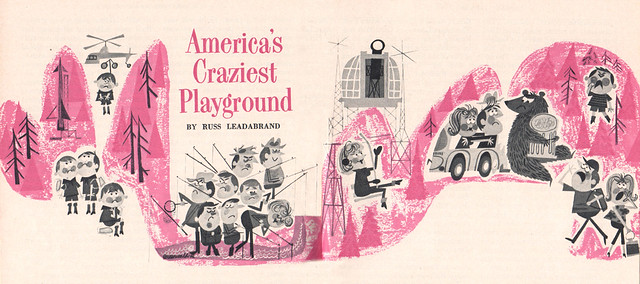
 Here are some fun characters by a mysterious "Greenwald R." They're from Pageant Magazine, a smaller, "digest" size magazine for the "gentleman." Bordering on the cheesecake from time to time, the magazine actually has an interesting connection to Mad Magazine. Well, I wish I knew more about "Greenwald R." I've seen similar work done by this artist, but never have been able to find anything more about him/her.
Here are some fun characters by a mysterious "Greenwald R." They're from Pageant Magazine, a smaller, "digest" size magazine for the "gentleman." Bordering on the cheesecake from time to time, the magazine actually has an interesting connection to Mad Magazine. Well, I wish I knew more about "Greenwald R." I've seen similar work done by this artist, but never have been able to find anything more about him/her.

By: Beth,
on 4/16/2012
Blog:
YALSA - Young Adult Library Services Association
(
Login to Add to MyJacketFlap)
JacketFlap tags:
Innovation,
Teen Services,
nook,
30 Days of Innovation,
games,
Magazines,
Websites,
Kindle,
ebooks,
Add a tag
Can we finally put the argument to rest? E-readers are not killing reading, nor are they killing books. As research shows, people who own e-readers not only read more than people who don’t, but they read both e-books and print books. Not to mention, there are plenty of populations, from prison inmates to seniors, who will need print books for a long time coming. Neither one is going away.
That’s not to say that they’re the same, though. Far from it. In my experience, e-readers attract different types of readers than print books, and they’re also engaging more people who were previously non-readers. Anybody who thinks that’s not great, well… There are also scads of e-reading apps available for phones, tablets, and computers, so e-content is available to more than just people with Nooks and Kindles. People use e-readers for a variety of reasons, from pleasure reading to research, so it’s good to consider how many bases you can cover. The Pew Research Center released a report on reading, readers, and e-readers recently, and ALA of course responded. While Pew’s data is encouraging (among other statistics released, the study found that people who use e-readers read more books per year than people who only read in print), ALA pointed out that the stats of who reads at all, and who reads in what format, are also related to education and income level. So what can you do about it?
First, take a look at your e-book collection and see what types of materials are most widely represented. In my anecdotal experience, I’ve found that bestselling memoirs and adult fiction are easy to find in e-book format, as well as genre fiction like westerns and romance. Pew’s study also indicated that people are drawn to print and e-books for different reasons, based on the types of materials they can find. This is your chance to offer innovative e-materials, as well as to fill some gaps that your print collection just can’t do. If your library offers Kindles or other devices for checkout, and not just the e-materials, see if you can designate one of them as the YA e-reader, and fill it up with some teen-friendly stuff that will attract readers and non-readers alike. If you don’t have library-owned devices, you can always offer these suggestions on a flyer for your patrons who own personal devices.
Download literary and other magazines that are published for online audiences, in PDF format. For me, this is why I bought my Kindle in the first place–my grad school reading heavily leans toward the downloaded journal articles, and I didn’t want to clutter my hard drive or break my eyeballs reading it all on my computer. You might try things like Sucker Literary Magazine, a new magazine of YA fiction available on PDF and Kindle form, the Fairy Tale Review, which publishes fiction and poetry based on or inspired by fairy tales (their first issue is free and in PDF form, and the rest can be bought on an issue-by-issue basis), or Anthology, a collection of writing from a longstanding literary magazine by and for teens, Cicada
Load your e-reader with some free or inexpensive word and logic games. Both Nook and Kindle have a variety available. For a cost, both major retailers, as well as educational software companies, offer specialized dictionaries and other apps for academic subjects, too.
Have a strong immigrant, refugee, or bilingual population in your library? E-readers offer you the chance to bulk up your collection in other languages for a lower price than many print books. Amazon’s Kindle store has a huge selection of Spanish-language e-books (though it will transfer you to its Spanish version of the website, so make sure you can read it
February is right around the corner and that means Valentine's Day! More importantly, that means CANDY!
Fittingly, the February issue of Odyssey magazine is all about Candy!
Be sure to check out my article
"Making New Candy Concoctions". Ric McKown, an old friend and author of
The Candy Bar Cookbook: Baking with America's Favorite Candy (Longstreet Press, 2000), graciously helped me with some of the candy science. (See, old friends do come in handy.)
To complement my article, Odyssey has a
Candy Concoction Contest. Entries must be postmarked by March 30, 2012, so check it out.
And, four pages after my article, check out a piece by fellow INK member,
Karen Romano Young. Her Humanimal Doodle is titled
"Honey Doodle".
Librarians, teachers, and parents, looking for other books about Candy and Sweets for February? In May 2011, I wrote
Sweet! Interesting Nonfiction for Kids with a list of book suggestions.
Here are a few more suggestions that may inspire some candy concoctions:
Ghoulish Goodies: Creature Feature Cupcakes, Monster Eyeballs, Bat Wings, Funny Bones, Witches' Knuckles, and Much More!by Sharon Bowers
Storey Publishing July 2009
Raw Chocolateby Matthew Kenney and Meredith Baird
Gibbs Smith February 2012
Twist It Up: More Than 60 Delicious Recipes from an Inspiring Young Chefby Jack Witherspoon, Sheri Giblin, Lisa Witherspoon
Chronicle Books November 2011
Happy Valentine's Day to All!

Last week, I took a trip down memory lane when I attended the annual convention of the National Council for the Social Studies (NCSS) in Washington, D.C. It was my first NCSS conference since 1977, when I was a recent college graduate doing research for an American history textbook that Scholastic was planning to publish. The book was written and field tested, but never saw the light of day, due to the company’s change of heart about entering the basal social studies market. I soon moved on to Scholastic Newstime, a newsmagazine for sixth graders, and eventually, to the company’s math and science publications.
My excitement at being surrounded by social studies teachers again after going to a few dozen math and science teacher conferences was tempered by the news I received on Saturday that a former Scholastic colleague had passed away. Eric Oatman was the editor of Search magazine in the late 1970s and early 1980s, and he was the first person to pay me to write about American history. Besides hiring me as the freelance writer of the teaching guides and reproducibles that accompanied the magazines, Eric also assigned me the articles and history plays that nudged me toward my current career as an author focusing on history. I wrote articles about men who hauled freight across the Old West; an oral history project with World War II Rosie the Riveters; the influenza epidemic of 1918-1919; and the spirit of exploration in America. My classroom plays dramatized the exploits of a former slave who spied for the Americans during the Revolutionary War; the kidnapping of Daniel Boone’s daughter in 1776; and a family’s westward journey during the Gold Rush.
Writing for Search allowed me to indulge my endless curiosity about the people who were left out of the American history textbooks I read when I was growing up. It also gave me the chance to earn a little extra money as I established my independence. (I still have the reclining chair, lovingly called my “Search chair,” that I bought with my first $300 check.) Eric was a wise and enthusiastic editor, offering a guiding hand but letting me go where the stories took me. I also appreciated that he was not without a sense of irony. In 1983, when Search and Senior Scholastic were folded into a new publication, Scholastic Update, Eric assigned me to write the magazine’s last play. It followed Amelia Earhart’s preparations before she set out on the 1937 flight from which she never returned.

Just received copies of the December HIGHLIGHTS with my story "Why Bears Sleep All Winter: A Tale from Lapland."
LAPLAND?
No, I have no ancestral family stories from Lapland. I found this charming story in a tattered second hand volume of Scandinavian folktales published decades ago. The moral of my discovery (ditto the folktale) is to do good works. I was volunteering at a church book sale when I pulled the volume from a dusty donation box.
I've always loved the how or why (pourquoi) stories. One of my favorites is the old African-American one called "Why Dogs Hate Cats." The story begins with dog and cat best of friends until the day they go to town and buy a big ham. On the hot, dusty road going home, they take turns carrying their prize dinner. When dog carries the ham, he always chants, "Our ham, our ham," but when cat carries the ham he always chants, "My ham, my ham." Well, you can see it coming - not far from home cat climbs a tree with the ham and eats it all. Dog declares, "I can't get you now, but when you come down out of that tree, I'm going to chase you 'til you drop."
What's your favorite folktale?

A call is out from APPLESEEDS magazine for ghost stories written by kids. Below are the details for submitting your own spooky story. One of my first published short stories was a ghost story written for a local newspaper contest. What fun it was to see my words in the newspaper for everyone to read.
So here is your chance. Scare the socks off some eager readers with your spook-tacular story!
BOO! AppleSeeds is looking for ghost stories from its readers! The October issue is all about ghosts and other spooky things, and readers probably have some great ideas for a story of their own. Have your child send us their ghost story (along with illustrations to go with it) by Nov. 15, 2011. Handwritten stories are okay, but make sure that we can read them. The winner will receive a copy of Robert San Souci's Dare to Be Scared. Send them to AppleSeeds Ghost Stories Contest, 30 Grove St., Peterborough, NH 03458.
Your intentions don’t create footprints, your actions do.
-S.Whyte-
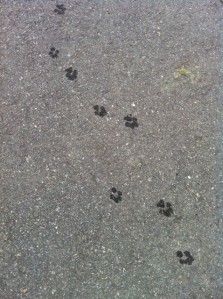
My footprints are the CUTEST! They’re tiny and round with little marks from my little nails. When I walk in the wet grass, I leave perfect footprints in the street. When I get inside, Mom says, “Stand still.” and then she cleans my feet with a baby wipe, and it’s goodbye adorable footprints and hello feet that smell like baby powder.
Mom doesn’t like footprints OR intentions. She remembers a long time ago, when she was reading a story in Highlights Magazine. She said, “Cute story.” and “I totally could’ve written that!” and “What did you step in now? Ugh!” Then she got the baby wipes out - again!
Mom was absolutely right about Highlights. She COULD’VE written a cute story for them, but she DIDN’T and somebody else did. She had intentions, but what she needed was action. After reading and reading in Highlights and intending and intending to write, she finally took action. And guess what – the magical people at Highlights thought her story was great, and they bought it! Ever since then, Mom writes all the time and sends stories and poems to tons of magazines for kids. Then she says, “Yay!” and “Look at my name in this magazine!” and “You’re filthy. Get in the bathtub.”


Goodbye footprints…..








2 Comments on
Inspirational Quote of the Week, last added: 10/3/2011

September has flown by and the leaves are beginning to change already to wonderful golds and oranges and reds. The fall wind wooshes past, blowing in a new season.
This is the perfect time for fun writing adventures. Try an simple alphabetic poem. Print the alphabet on your paper, one letter on each line. Now think of something "fallish" for each letter.
A is for acorns.
B is for birds flying north.
C is for colors--red, gold, and orange.
D is for daylight becoming less and less.
So you get the idea. If you can't make it through all the alphabet, that's okay. Do as many letters as you can. Or if you're working in a group, assign different letters to different people--or work as teams.
Next week is October already. This month is Children's Magazine Month. Magazines are jam-packed with stories and activities and cool art work. Go see what magazines your school or public library have. Usually you can check out old issues. Or find online children's magazines like Guardian Angel Kids, Highlights Kids, or Literature For Kids, where I'll have a new story--SPIDER IN DISGUISE--in the October issue.
Why not try to write your own story with a fall setting? Perhaps you can write a mystery, or a silly story, or an adventure. Take a piece of paper and start brainstorming ideas. Put your main character in the middle of the paper. Now draw 3 circles above and write 3 possible problems for your main character. Down below write 3 different settings. On each side, write in possible minor characters. Then pick out your favorite problem, setting, and characters. Mix them up and see what happens!
Eric Schaller and I have been working on creating an online version of a magazine some of our ancestors were involved with in 1876, and after a long period of work, with the brilliant and invaluable help of Luís Rodrigues,
THE REVELATOR can now be revealed.
In it you will find two new short stories, "Gaslight" by Jeffrey Ford and "Nick Kaufmann, Last of the Red-Hot Superwhores" by Nick Mamatas; an essay about the relationship between Salem, Massachusetts and witches by Robin DeRosa, poetry by Lillian Aujo and Beverly Nambozo, an interview with and comix by Edward Bolman, an account of The Spleen Brothers by Brian Francis Slattery, paintings by Michaela D'Angelo, and an eyewitness account of the James/Younger gang's raid on the bank in Northfield, Minnesota -- an account unlike any others, and till now lost in the archives of
The Revelator!
A theme of twins, doubles, and doppelgangers runs lightly through this issue of the magazine. It's present in the fiction, there's the idea of historical doubling in Robin's essay on Salem, etc. We got creative with the doubling in the poetry department -- I knew Beverly had a lot of poet friends, and so we asked her to be the commissioning editor for the second poem, and she brought Lillian to us. Never having met Lillian in real life, I don't know if she's Beverly's doppelganger, but I do know we're thrilled to be able to publish the work of both. And of everybody else who was brave enough to want to join the old, weird tradition of
The Revelator.
There will probably be future or past issues. Please note though that because of limited resources, we are not open to unsolicited submissions. We would love to get to that point eventually, but right now we just don't have the ability to read through a lot of unsolicited work.
Who is a publisher? When is it a long article and when is it a book?
When a scandal breaks or a news story goes white hot, newspapers and magazines are increasingly rushing e-books into print.
The New York Times says, "Part of the appeal is cost. Instead of paying writers hefty advances and then sending them out on the road to report for months at a time, publishers can rely on reporters who are already doing the work as part of their day job. Politico, for example, has assigned Mike Allen, its chief White House correspondent, to write and report with Evan Thomas, a noted political writer. The e-book will be the combination of their efforts."
and...
"Some publishers are trying a different approach — one that requires even fewer reporting and writing resources. Vanity Fair and The New Yorker, for example, have created their own e-books by bundling together previously published works surrounding a major news event."
Read more here.

 I’m a big proponent of writing for trade magazines: They’re typically a joy to write for, especially compared to many newsstand magazines. You can earn a high per-hour rate (mine is around $250/hour). They’re a good source of steady work. And you don’t always have to pitch them; I’ve broken into many with a letter of introduction.
I’m a big proponent of writing for trade magazines: They’re typically a joy to write for, especially compared to many newsstand magazines. You can earn a high per-hour rate (mine is around $250/hour). They’re a good source of steady work. And you don’t always have to pitch them; I’ve broken into many with a letter of introduction.
“Linda, you’re a crazy woman,” you say. “How can I write for a trade magazine unless I have knowledge of the industry the trade covers?”
Well, let’s see…I’ve written regularly for Pizza Today, The Federal Credit Union, In-Plant Graphics, and many other trades. What do I know about pizza restaurants, credit unions, and in-plant printing operations? Well, now I know a lot — but when I started writing for them, I knew zilch.
The secret is that there are plenty of areas of expertise that transfer across industries, such as marketing, HR, PR, sales, law, productivity, technology, finances, and more. If you have a knowledge of any of these or other cross-industry subjects, you can parlay that into assignments from trades. For example, I’m a generalist with lots of areas of knowledge, so I’ve written on productivity for The Federal Credit Union, technology for In-Plant Graphics, and marketing for magazines like Pizza Today, Mini-Storage Messenger, and more.
The way you make these subjects relevant to a trade magazine’s readers is to interview sources from the industry the magazine covers. For my article on productivity for The Federal Credit Union, I interviewed two general productivity experts plus a few credit union execs who had good productivity tips. For my articles on marketing for Pizza Today, I’ve interviewed restaurant consultants, marketing experts, and pizza restaurant owners.
It’s easy to find sources in many industries through Help a Reporter and industry organizations. Also, once you get an assignment, your editor will often recommend insiders you can talk to.
Now, I don’t want to make it sound like writing for trades is a cake walk and you don’t need to put any effort into it. Trade magazine editors are like consumer magazine editors in that they’re looking for unique ideas that are timely and relevant to their readers. If you’re good at researching, finding appropriate sources, and interviewing people from different industries — and you have some expertise in an area that transfers across industries like marketing or finances — you can write for trade magazines. [lf]
 I’m in the process of moving from New Hampshire to North Carolina, and things will be crazy around here until we get settled in. I’ll be running some oldie-but-goodie posts on the blog until I’m back to work. Enjoy!
I’m in the process of moving from New Hampshire to North Carolina, and things will be crazy around here until we get settled in. I’ll be running some oldie-but-goodie posts on the blog until I’m back to work. Enjoy!
Since I teach an e-course that tells writers how to write queries that will hopefully land magazine assignments, one question I get a lot at the end of the course is, “What happens if I do get an assignment? What can I expect?”
Well, first, you do the happy dance. Then you e-mail me and let me know of your good fortune so I can do the happy dance. Then it will probably look something like this:
Let’s say you pitched Big Health Magazine with your idea for an article about how friends and family affect your health. First, the editor will call or (more often) e-mail you and let you know that they would like you to write the story. What you need to know before you accept the assignment is:
- How long the article will be.
- What the deadline is.
- What the contract terms are.
- What the pay is.
Unfortunately, many editors leave out crucial information — especially the pay. They ask whether you want the assignment, and when you pant “Yes!” they drop the bomb that they pay half a cent per word.
If the editor leaves out any of this information, ask for it. The editor will not withdraw the assignment if you ask what the pay is, or what rights they’re buying. She probably won’t even blink an eye.
Make sure you’re ready to accept the terms the editor offers before you accept the assignment:
- How long the article will be. Is the editor asking you to write a story you envisioned as 2,000 words in 300 words — or vice versa? If so, do you think you can make it work — and do you want to?
- What the deadline is. Do you think you can make the deadline? Remember, even if you’re a fast writer, nailing down sources for interviews can be the most time-consuming (and unpredictable) part of an assignment.
- What the contract terms are. Many magazines these days are asking writers to sign contracts giving the magazine all the rights to the article, such as Work for Hire or All Rights. Are you willing to give up the right to resell your article as a reprint? Are you willing to see your article reprinted by the magazine’s publishing partners — without seeing an extra dime? I’m by no means a contract expert, so check out the contract terms glossary on the American Society of Journalists and Authors website to learn about the different terms you may be offered.
- What the pay is. Usually the editor will offer you a set fee, such as $1,000 for the article, rather than a per-word rate such as $1 per word. Do some quick math in your head. If the per-word rate acceptable to you? Can you estimate how long it will take you to write the article, and if so, will you be making an acceptable hourly rate?
What if you don’t like some of the answers you get? Negotiate. Again, an editor will not kick you to the curb if you negotiate for terms that are more acceptable to you. You can ask for a few extra days on the deadline, see if you can wrangle more words, ask for a First North American Serial Rights contract, or request a boost in the payrate. If you think it will help your case, tell the editor why: “Do you think you can give me more words? That way I can be sure to include all the latest studies” or “I have some other deadlines around that time. Can I have a few ext
TODAY, I was surprised to see that my Aristocakes cupcake bakers were featured on the Today Show! Yep, there they are with Matt Lauer and Bobbie Thomas, the style editor, in a segment about giving your mom the royal treatment. Well, this was a treat for me!

Later, I was flipping though the June/July issue of the Everyday with Rachael Ray magazine that had just come in the mail, and there’s another one of my current products in the Fun Faves section! These are called Tropsticks… flamingo-shaped, easy-to-use chopsticks.

Yeah, it was a good day.






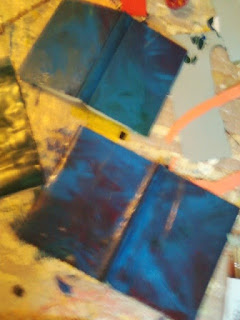























 2 Comments on Inspirational Quote of the Week, last added: 10/3/2011
2 Comments on Inspirational Quote of the Week, last added: 10/3/2011
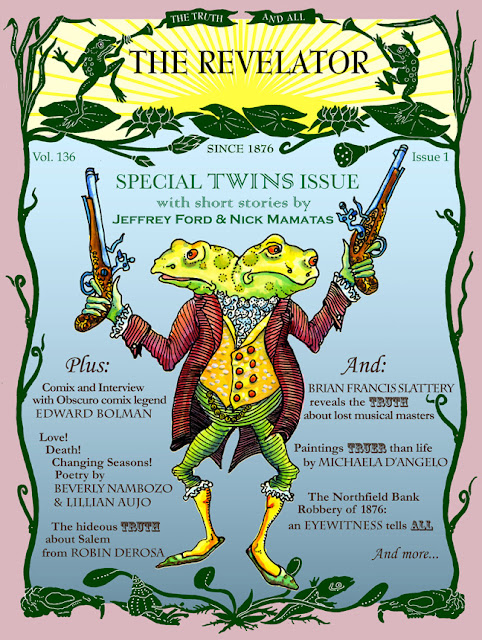





BIG, BIG , BIG congratulations too Mommy..Told ya Cupcake, next one would be the one Wez so happy for you both..Lot’s of treats to celebrate
Wez so happy for you both..Lot’s of treats to celebrate  xx00xx
xx00xx
Well done!! Yippee!! Congratulations!! So excited for you – this is fantastic news. Don’t forget us mere mortals now that you are famous
Awwww, Cupcake, I’m positively SHAKING with excitement for your mom! And I know that when I tell Tommy, he will do a happy dance in her honor! Congrats…
Donna L Martin
http://www.donnalmartin.com
http://www.donasdays.blogspot.com
That’s gorgeous Cupcake, congratulations to mom!!!
Congratulations!!!!
Omg this is fantastic!!! You must be so chuffed, I hope you are celebrating will definitely keep my eye out for it :p and like long life cats and dogs said – dont forget about us little folk when your Oober famous!!
will definitely keep my eye out for it :p and like long life cats and dogs said – dont forget about us little folk when your Oober famous!!  hehe congratulations again
hehe congratulations again 
YAY!!!! Fantastic!!! Congratulations to your very talented mom! I hope there are treats for everyone And Cupcake, it’s a dog’s life. You do look worn out. Get some rest
And Cupcake, it’s a dog’s life. You do look worn out. Get some rest 
Congrats to your mommy Cupcake! That’s great news. LOL at the rent bill.
Yay! Congratulations:-)
I like how you think, Mollie. Treats! Yay!
Love and licks,
C